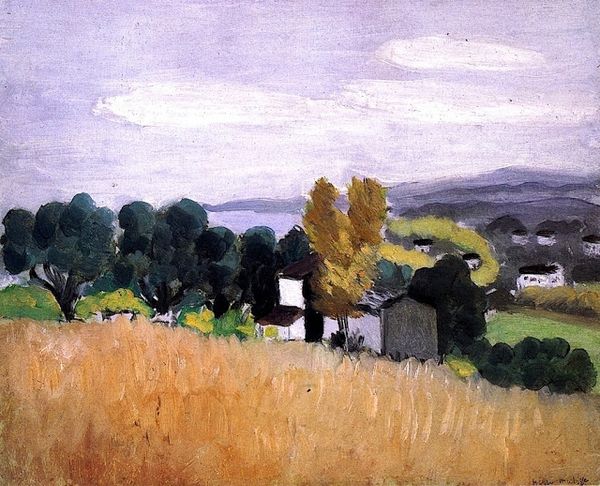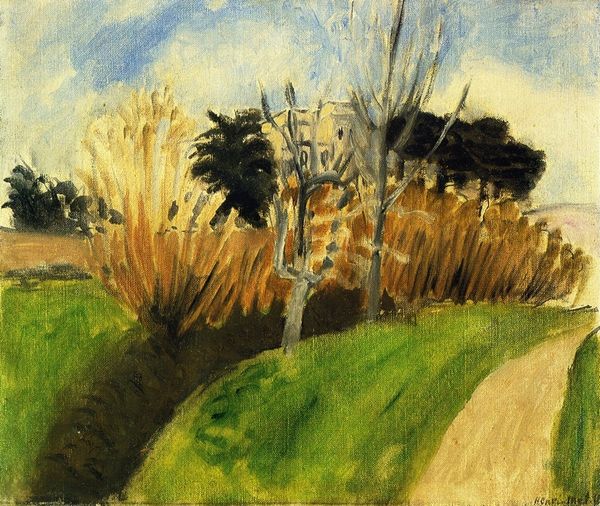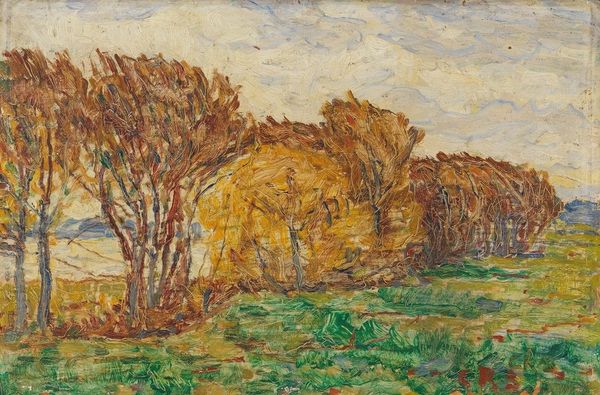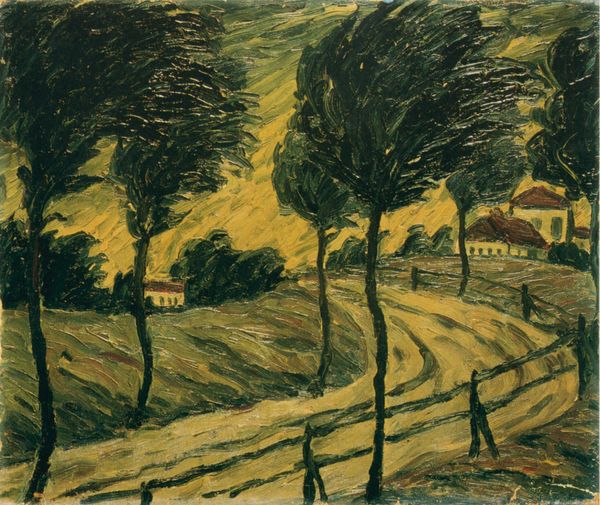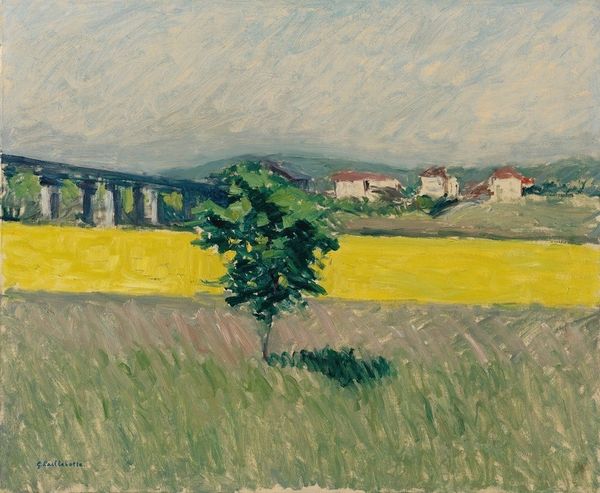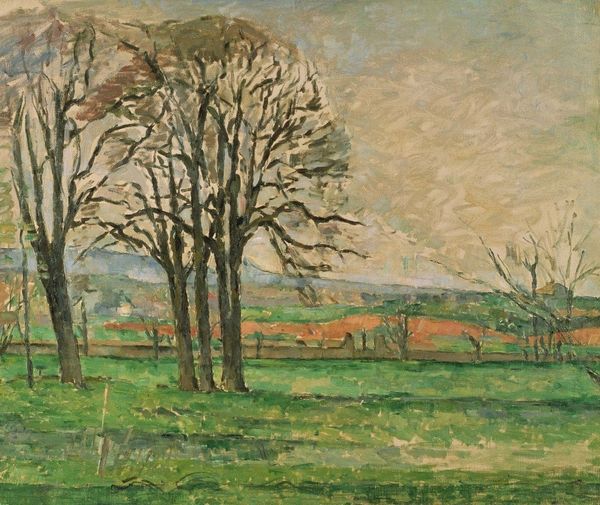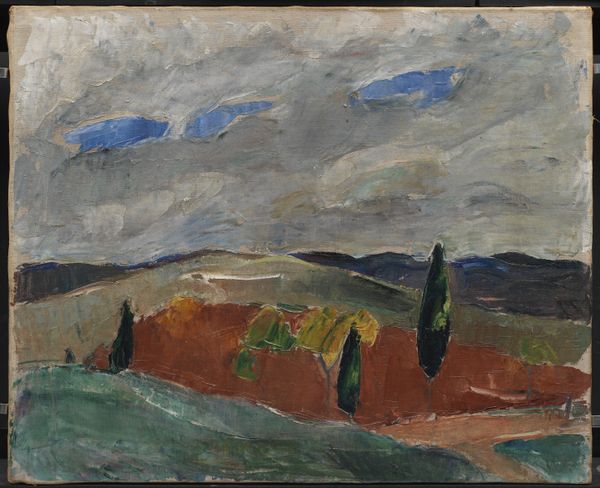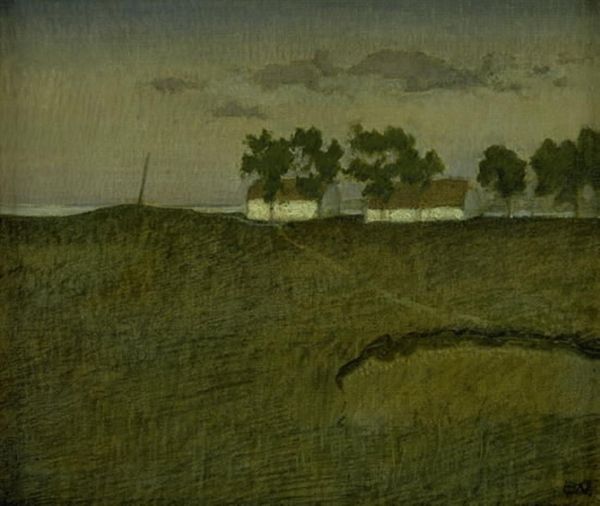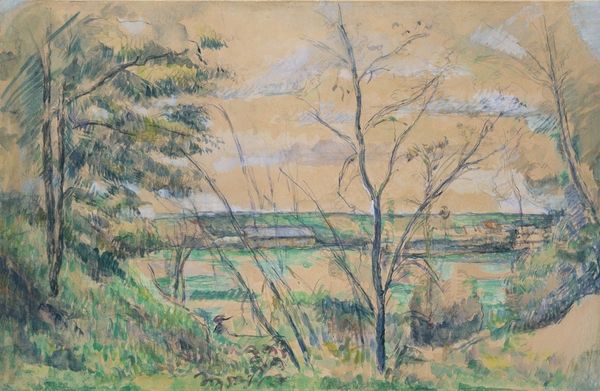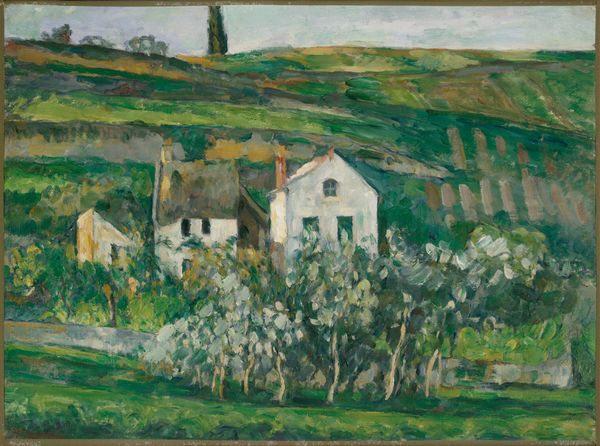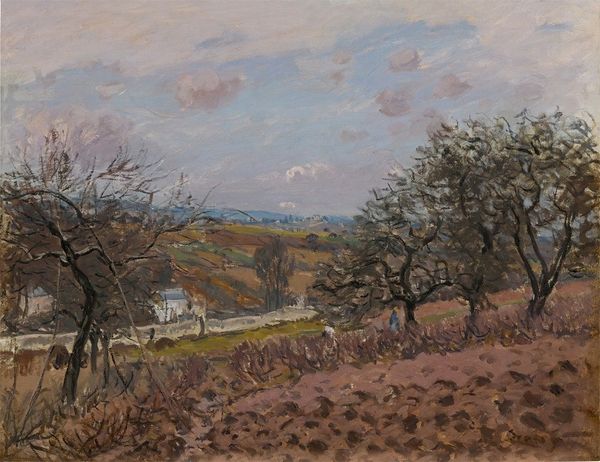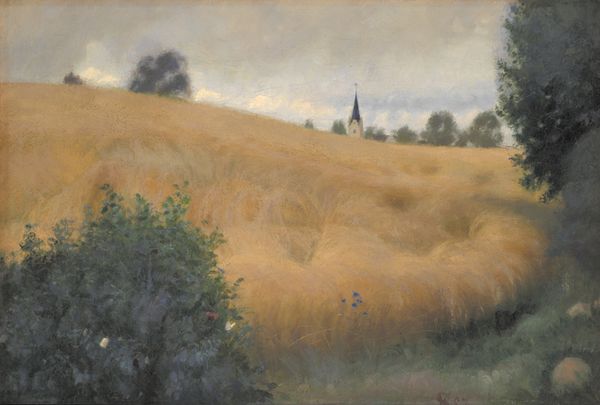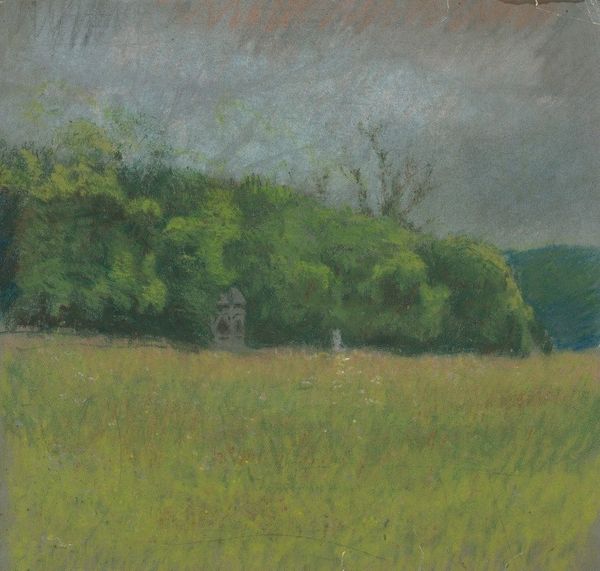
Copyright: Public domain US
Editor: This is Henri Matisse's "Champs De Blé à Cagnes", painted in 1918 using oil paints, capturing a wheat field. It’s beautiful! The colors feel so muted and peaceful. What strikes you when you look at it? Curator: The first thing I notice is the historical context. Painted in 1918, towards the end of World War I, this seemingly simple landscape carries a lot of weight. Knowing that many artists were directly involved in the conflict, Matisse's choice to focus on the serene beauty of the natural world can be seen as an intentional commentary. Editor: A commentary on what, exactly? Curator: Well, think about it: During times of immense social and political upheaval, art often serves as a form of escapism or a quiet form of protest. Instead of depicting the horrors of war, Matisse turns his gaze towards a field of wheat. It’s a statement, isn't it? Perhaps it is meant to remind us of the enduring power of nature, its capacity for renewal, regardless of the human conflicts happening around it. Does the hazy style seem relevant to the theme of quiet defiance to you? Editor: That’s a powerful interpretation! It makes me consider the public role of art during wartime differently. So it’s less about pretty scenery and more about societal resilience? Curator: Precisely. And we have to consider the institutions presenting and promoting works like these, then and now. Who gets to define "beauty," and what purposes does that definition serve? Editor: I never thought of a landscape painting holding so much historical relevance. Curator: That's the beauty of art history, isn't it?
Comments
No comments
Be the first to comment and join the conversation on the ultimate creative platform.
